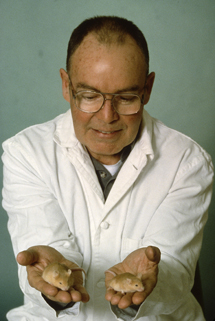Ena/VASP is required for endothelial barrier function in vivo.
Document Type
Article
Publication Date
2007
Keywords
Actomyosin, Animals, Antigens-CD31, Aorta, Blood-Vessels, Cell-Adhesion-Molecules, Cells-Cultured, Cytoskeleton, Edema, Embryo-Mammalian, Endothelial-Cells, Endothelium-Vascular, Female, Heart, Hemorrhage, Humans, Immunohistochemistry, Intercellular-Junctions, Mice-Knockout, Pregnancy, Umbilical-Veins
First Page
761
Last Page
775
JAX Source
J Cell Biol 2007 Nov; 179(4):761-75.
Abstract
Enabled/vasodilator-stimulated phosphoprotein (Ena/VASP) proteins are key actin regulators that localize at regions of dynamic actin remodeling, including cellular protrusions and cell-cell and cell-matrix junctions. Several studies have suggested that Ena/VASP proteins are involved in the formation and function of cellular junctions. Here, we establish the importance of Ena/VASP in endothelial junctions in vivo by analysis of Ena/VASP-deficient animals. In the absence of Ena/VASP, the vasculature exhibits patterning defects and lacks structural integrity, leading to edema, hemorrhaging, and late stage embryonic lethality. In endothelial cells, we find that Ena/VASP activity is required for normal F-actin content, actomyosin contractility, and proper response to shear stress. These findings demonstrate that Ena/VASP is critical for actin cytoskeleton remodeling events involved in the maintenance of functional endothelia.
Recommended Citation
Furman C,
Sieminski AL,
Kwiatkowski AV,
Rubinson DA,
Vasile E,
Bronson RT,
Fassler R,
Gertler FB.
Ena/VASP is required for endothelial barrier function in vivo. J Cell Biol 2007 Nov; 179(4):761-75.


